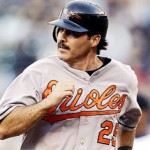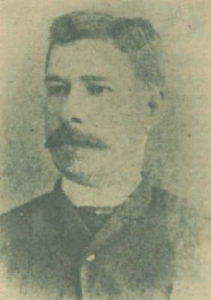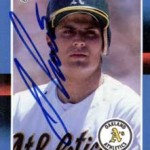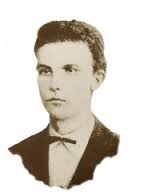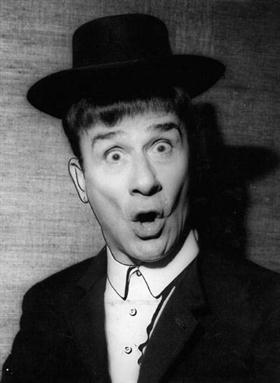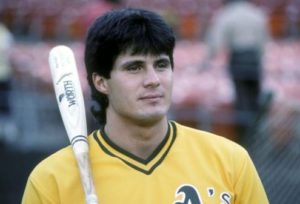 BASEBALL A U.S. PASTIME IS A “RELIGION” CON LOS LATINOS.
BASEBALL A U.S. PASTIME IS A “RELIGION” CON LOS LATINOS.
When you think of Livan Hernandez, remember this name out of Latin American baseball’s earliest days: a Cuban named Nemesio Guillot.
Because Guillot attended college in the United States and returned to Havana in 1866 swinging a baseball bat, baseball was born.
There are other yarns about how baseball got to Latin America. Invading Marines took it to Nicaragua, for example. American oilmen brought it to Mexico. In the case of Cuba, which was playing ball only 10 years after the United States, the game may have arrived when American sailors docked in the port of Matanzas and started playing, prompting Cuban spectators to try their hand.
Playing baseball also became a form of protest in a Cuba ruled by Spain, so the Spanish authorities attempted to suppress local enthusiasm for the alien sport.
Many pro-independence Cubans who played baseball were deported to Spanish enclaves in far-off Morocco. Many others found refuge in the Dominican Republic and nations like Colombia and Venezuela, all of which now have citizens playing baseball with major league teams like the Florida Marlins and the Cleveland Indians.
While American merchants and seamen, students and prospectors, and especially the U.S. Marine Corps, helped spread the sport in Latin America, those involved in professional baseball acknowledge that zealous Cubans played a key role.
“The Cubans were the missionaries of baseball. They spread it like it was a religion, like the friars spread the Catholic faith in the days of the conquistadores,” said Oscar Fuentes, a baseball scout, using his cellular phone in heavy traffic in Caracas.
His country, with a population of 20.2 million, has 33 players in Major League Baseball — second only to the Dominican Republic, which has 7.5 million residents and an amazing 81 major league players.
“The Cubans gave the countries around the Caribbean rim many things, including cigars . . . but best of all they gave us baseball,” Fuentes said.
The first Cuban to play pro ball in the United States was Esteban “Steve” Bellan, a catcher for the Troy, N.Y., Haymakers in the 1870s. Sixty Cubans played in the majors when Castro came to power in 1959. Only eight Cuban-born players — Hernandez, Rey Ordoñez of the Mets, Rafael Palmeiro of the Orioles, Ariel Prieto and Jose Canseco of the Oakland A’s, Osvaldo Fernandez of the Giants, and Tony Fossas and Eli Marrero of the Cardinals — play now.
Until 1947, there was only a trickle of Latin American players in the majors because of the color barrier. But that year, when Jackie Robinson was hired to play for the Brooklyn Dodgers, the door was opened to a surge of international players.
Of the 12,000 men to make it to the majors by the 1990s, 600 were Latin Americans. At the end of this season, there were 184 players born in Latin America with major league teams.
HEADING SOUTH.
Before Robinson’s breakthrough, African-American players were eagerly recruited by Latin American teams, especially in Mexico and in the Dominican Republic. In the 1930s, there were more Negro League players on the Dragones team than there were Dominicans. In the days before astronomical salaries, white players also headed south to play in the winter leagues.
Latin American teams sometimes did not belong only to a city. They were the personal standard bearers of dictatorships, making for unusual league play, says Francisco Chamorro, editor of El Nuevo Diario in Managua, who bats left handed.
“The thing I remember about the [Anastasio] Somoza days,” he says, talking about the deposed Nicaraguan dictator, “is that he had a team, the Cinco Estrellas. So if you opposed Somoza, you rooted for the other Managua team, the Boers, when the teams played each other.”
The Boers still play. The Cinco Estrellas are gone. So are the Dantos, organized by the Sandinistas, whose candidate for president lost to Chamorro’s aunt, Violeta Chamorro.
In the Dominican Republic, dictator Rafael Trujillo not only sponsored teams, he also had stadiums named after him, where the crowds had to shout his name. When a Cuban team came close to defeating a squad bearing the Trujillo name, he ordered some of its members arrested to prevent the victory.
PROMOTING PATRIOTISM.
Americans also felt the sting of rebuke on the diamond. In Cuba, Nicaragua and the Dominican Republic, local squads saw invitations to play against occupying U.S. Marines as an opportunity to assert their nationalism and promote patriotism, Chamorro said.
But no one in the Dominican Republic, says Tony Ortega, a sports broadcaster in Santo Domingo, would say anything bad about baseball — the United States yes, baseball no.
“You could shout, `Yanquis out,’ ” he says, “but you could not knock the New York Yankees. Politics was one thing, but baseball was sacred.”
Rene Francisco, a Lake Worth resident who scouts for the Atlanta Braves in the Dominican Republic, says that major league demand for ballplayers changes lives in the Caribbean country.
“Kids play it all over the country,” Francisco said. “Little kids play it with a stick, plus a cap off a plastic bottle. Many American teams have academies with 30-man rosters . . .
“In the academies they learn English. They get an education. Even if they don’t make it to the U.S.A., they get it better in life.”
Agencies/MiamiHerald/BrinkleyRogers/InternetPhotos/Arnoldo Varona/TheCubanHistory.com
THE CUBAN HISTORY, HOLLYWOOD.
 DEPORTES: EN BASEBALL ‘SE HABLA ESPANOL” DESDE HACE MUCHO TIEMPO.
DEPORTES: EN BASEBALL ‘SE HABLA ESPANOL” DESDE HACE MUCHO TIEMPO.
El béisbol un pasatiempo estadounidense es ‘una religión’ con Latínos.
Cuando piense en Livan Hernandez, recuerde este nombre de los días más tempranos del béisbol latinoamericano: un cubano llamado a Nemesio Guillot.
Como Guillot asistió a la universidad en los Estados Unidos y volvió a La Habana en 1866 balanceando un bate, el béisbol nació.
Hay otros hilos sobre cómo el béisbol se puso a América Latina. La invasión de Infantes de marina lo tomó a Nicaragua, por ejemplo. Los petroleros americanos lo trajeron a México. En caso de Cuba, que jugaba a la pelota sólo 10 años después de los Estados Unidos, el juego puede haber llegado cuando los marineros americanos atracaron en el puerto de Matanzas y comenzaron a jugar, incitando a espectadores cubanos a intentar su mano.
El juego del béisbol también se hizo una forma de protesta en una Cuba gobernada por España, por tanto las autoridades españolas intentaron suprimir el entusiasmo local para el deporte extranjero.
Muchos cubanos de a favor de independencia que jugaron el béisbol se deportaron a enclaves españoles en Marruecos remoto. Muchos otros encontraron refugio en la República Dominicana y naciones como Colombia y Venezuela, todos de los cuales ahora tienen ciudadanos que juegan el béisbol con equipos de la Liga Mayor como los Florida Marlins y los Indios de Cleveland.
Mientras los comerciantes americanos y los marineros, estudiantes y exploradores, y sobre todo la Infantería de Marina estadounidense, ayudaron a extender el deporte en América Latina, los implicados en el béisbol profesional reconocen que los cubanos entusiastas desempeñaron un papel fundamental.
”Los cubanos eran los misioneros de béisbol. Se extienden como ello era una religión, como los frailes extiende la fe católica en los días de los conquistadores”, dijo Oscar Fuentes, un explorador del béisbol, usando su teléfono celular en el tráfico pesado en Caracas.
Su país, con una población de 20.2 millones, tiene 33 jugadores en el Béisbol de la Liga Mayor – segundo sólo a la República Dominicana, que tiene 7.5 millones de residentes y unos 81 jugadores de la Liga Mayor asombrosos.
”Los cubanos dieron los países alrededor del borde caribe muchas cosas, incluso puros… pero el mejor de todo nos dieron el béisbol”, dijo Fuentes.
El primer cubano para jugar la pelota pro en los Estados Unidos era Esteban ”Steve” Bellan, un receptor para Troy, Nueva York, Heneadores en los años 1870. Sesenta cubanos jugaron en los mayores cuando Castro subió al poder en 1959. Sólo ocho jugadores de origen cubano – Hernandez, Rey Ordoñez de Mets, Rafael Palmeiro de las Oropéndolas, Ariel Prieto y Jose Canseco de Oakland A, Osvaldo Fernandez de los Gigantes, y Tony Fossas y Eli Marrero de los Cardenales – juegan ahora.
Hasta 1947, había sólo un chorrito de jugadores latinoamericanos en los mayores debido a la barrera en color. Pero ese año, cuando Jackie Robinson se contrató para jugar para los Trampistas de Brooklyn, la puerta se abrió a una oleada de jugadores internacionales.
De los 12,000 hombres para hacerlo a los mayores antes de los años 1990, 600 eran latinoamericanos. Al final de esta temporada, había 184 jugadores nacidos en América Latina con equipos de la Liga Mayor.
TÍTULO AL SUR.
Antes de la brecha de Robinson, los jugadores afroamericanos fueron con impaciencia reclutados por equipos latinoamericanos, sobre todo en México y en la República Dominicana. En los años 1930, había más jugadores de la Liga negros en el equipo de Dragones que había dominicanos. En los días antes de sueldos astronómicos, los jugadores blancos también encabezaron el sur para jugar en las ligas de invierno.
Los equipos latinoamericanos a veces no pertenecían sólo a una ciudad. Eran los portadores estándares personales de dictaduras, que hacen para el juego de la liga extraño, dice Francisco Chamorro, el redactor de El Nuevo Diario en Managua, que pestañea para zurdos.
”La cosa que recuerdo sobre los días [de Anastasio] Somoza”, dice, hablando del dictador nicaragüense destituido, ”es que tenía un equipo, Cinco Estrellas. Así pues, si se opuso a Somoza, animó el otro equipo de Managua, los bóers, cuando los equipos jugaron el uno al otro”.
Los bóers todavía juegan. Los Cinco Estrellas se van. Tan son Dantos, organizado por los sandinistas, cuyo candidato por el presidente perdió a la tía de Chamorro, Violeta Chamorro.
En la República Dominicana, el dictador Rafael Trujillo no sólo patrocinó equipos, también hizo nombrar estadios por él, donde las muchedumbres tuvieron que gritar su nombre. Cuando un equipo cubano vino cerca de derrotar una escuadrilla que aguanta el nombre de Trujillo, pidió a algunos de sus miembros detenidos para prevenir la victoria.
PROMOCIÓN DE PATRIOTISMO.
Los americanos también sintieron la picadura de reprimenda en el diamante. En Cuba, Nicaragua y la República Dominicana, las escuadrillas locales vieron invitaciones de jugar contra la ocupación de Infantes de marina estadounidenses como una oportunidad de afirmar su nacionalismo y promover el patriotismo, Chamorro dijo.
Pero nadie en la República Dominicana, dice Tony Ortega, un locutor de deportes en Santo Domingo, diría nada mal sobre el béisbol – los Estados Unidos sí, béisbol no.
”Podría gritar, ‘Yanquis”’, dice, ”pero no podía golpear los Yanquis de Nueva York. La política era una cosa, pero el béisbol era sagrado”.
Rene Francisco, a Lake Worth resident who scouts for the Atlanta Braves in the Dominican Republic, says that major league demand for ballplayers changes lives in the Caribbean country.
“Kids play it all over the country,” Francisco said. “Little kids play it with a stick, plus a cap off a plastic bottle. Many American teams have academies with 30-man rosters . . .
“In the academies they learn English. They get an education. Even if they don’t make it to the U.S.A., they get it better in life.”
Agencies/MiamiHerald/BrinkleyRogers/InternetPhotos/Arnoldo Varona/TheCubanHistory.com
THE CUBAN HISTORY, HOLLYWOOD.




